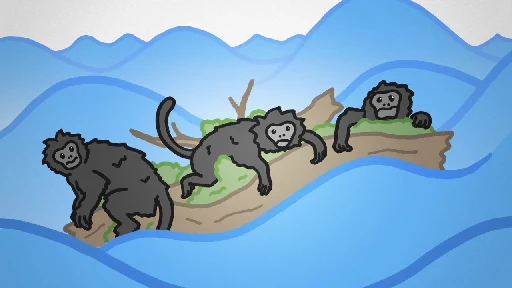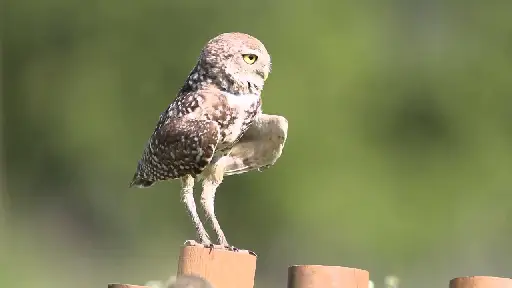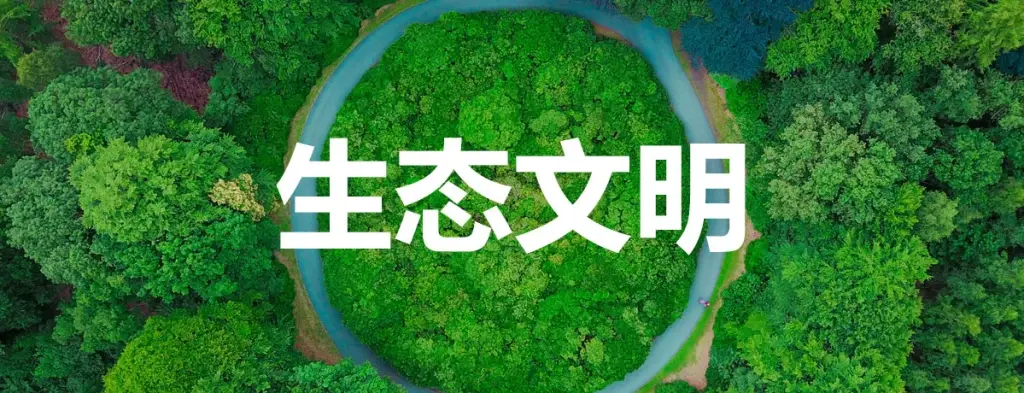
earth
- The Last Muskox in Sweden are Dying Out - here's how we can help

YouTube Video
Click to view this content.
- [WARNING: BUGS] What is your favorite bug?
Nature is cool as shit, and the diversity of insects is wild. It's time you nerds started learning about bugs. So you better pick a bug you like and tell me about it.
Here are some of of my faves:
Also yes I know spiders aren't insects shut up
- New trends: young people switching to a more sustainable lifestylenews.cgtn.com New trends: Young people switching to a more sustainable lifestyle
Editor's note: CGTN presents "New Trends," which provides you new trends among Chinese people and tells you reasons behind them. In this part of the series, CGTN offers an insight into the choice of Generation Zers in China pursuing a "life without

In a hot afternoon in August, He Yuming, wearing her dad's big shirt and sweating profusely, sat down in a café and took out a neatly-folded handkerchief to wipe her sweat.
Everyday, He, beginning her sustainable journey in 2019, brings a reusable water bottle, tableware, portable charger, handkerchief, home-made lipstick and shopping bags in her small second-hand cross-body bag. The zero-waste kit can basically meet the needs of the day, so that she tries not to produce garbage.
In China, growing numbers of young people, with great respect for nature, are finding their ways to lower their carbon footprint. For those young nature-lovers, zero-waste is just a hobby, making them live with less and leading more fulfilling lives.
Su Yige, also named Yigedaizi on social media, labeling herself as "a hedonic environmentalist," is a lifestyle vlogger who shares her daily eco-friendly life and thoughts on environment protection on social media.
"Love myself and love our earth," she wrote on her YouTube profile.
She feels that "life without trace" will not sacrifice the quality of life and the pursuit of happiness, but, leave minimal impact on the environment.
Su's path on environment protection is also a teenagers' self-discovery journey. In her freshman year in university, Su was insecure about how she looked and how she dressed.
"Now, I really don't mind if people judge me on my clothes or my makeup. Instead, I would tell them that I truly didn't spend too much time on fashion or my outlook. What I love is the planet and nature," said Su.
For these nature lovers, environmental protection is just a hobby and a lifestyle.
"I don't care if I can influence anyone. I like environment protection just like some other people love basketball or pop singers," Su said to CGTN.
Deeply influenced by her family's living habits, He was instilled with eco-friendly awareness and respect for nature since childhood.
In 2019, He began her minimalist lifestyle journey — getting rid of the things she didn't need and focusing on things that really matter. Several months later, she realized that sustainability might be a better choice since it is about being a more conscious consumer and making decisions that doesn't damage the environment.
Then, He meticulously upgraded aspects of her existence to lead a more sustainable and less-carbon-consuming life by opting for consciously made, compostable and long-lasting, zero-waste daily items.
The first step was to change her shampoo and conditioner to shampoo bar soap and use reusable cups when ordering milk tea.
When talking about her next ecological footprint, He said she will be more eco-friendly on more occasions.
"I have many small goals. Next, I hope I can reduce the use of disposal napkins and plastic bags when buying vegetable or meat," He said.
"We don't need a handful of people doing zero waste perfectly. We need millions of people doing it imperfectly," Su shared her favorite quotes in her video.
"When I started embrace sustainable lifestyle in Canada, many people thought I was a Japanese student since there were few Chinese people would choose such lifestyle," she said to CGTN.
Then she searched online and found that all the contents about sustainable lifestyle on social media in China were advocated by local government or non-profits organizations.
"It is not because no one in China likes this way of life, but because no one knows such lifestyle is possible," she said. Then she started her vlog journey on social media.
To help more nature-lovers find people sharing the same interests, Su established an online group named "life without trace," which has attracted over 30,000 members online.
In her group, the most active topics of discussion are reduction in the use of plastics, environmental protection life in university dormitories and how to grow vegetables at dormitories.
In Beijing, there is a group of thousands of people who keeping picking up garbage every week.
"There is a constant flow of garbage, and there is no end to picking them up,”Zhang Yashi, 36, the founder of Plogging Beijing, said. "I hope that I can influence more people to realize that the environment needs to be maintained through activities like this."
To them, plogging, an act of picking up litter while jogging, is just simplicity and a desire to make a positive difference.
- I'm a wasp! I'm a mantis! I'm a fly! I'm also a liar.

It's not a wasp, a mantis or a fly. It doesn't even have a stinger.
> Wasp Mantidfly - Field Station > > Mantisflies/mantidflies, family Mantispidae, are in the order Neuroptera (“nerve wings”), a very cool order that includes antlions and lacewings, plus owlflies and a few other dynamite groups. [...] There are about 400 species in the mantidfly family – 13 in North America – and they’re most diverse just about anywhere south of Wisconsin. They’re not related to praying mantises and they’re not related to flies, either. > > [...] > > Because they’re such good mimics, wasp mantisflies are probably overlooked frequently (especially by the BugLady). They come in five color phases, and each matches a Polistes (paper) wasp that’s found within its range. [...] Batesian mimicry is mimicry wherein an animal that is edible disguises itself as something that is either noxious or harmful, benefiting from its doppelganger’s reputation.
- Poudre Canyon, Colorado

One of my favourite places in the state. Just spent the weekend camping at the far end gorging myself on huckleberries while watching the meteor shower in a dark sky area.
- Bali rice experiment cuts greenhouse gas emissions and increases yieldsnews.mongabay.com Bali rice experiment cuts greenhouse gas emissions and increases yields
“After we finished ploughing, we would bathe the cows and then relax in the field playing flutes,” said Jero Dodo, who has farmed the rice terraces of Tabanan, Bali, since he was 12 years old. While he speaks fondly of the past, the farmer has one foot in the future. Dodo, who spoke to Mongabay […]

- Anyone else see the meteor shower tonight?
Supposed to be at its peak tomorrow night but it was so clear tonight, we just had to go out and see
- World’s largest private rhino herd doesn’t have a buyer — or much of a futurenews.mongabay.com World’s largest private rhino herd doesn’t have a buyer — or much of a future
On May 1 this year, an online auction for a controversial captive-breeding project that comes with one in eight of all southern white rhinos in the world ended in a whimper — with a grand total of zero bids. According to a press release on the website of the Platinum Rhino project, it received offli...
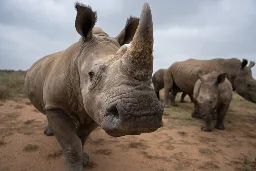
- GRASSHOPPERS HAVE GONE WOKE!!1!

> In North American Katydids, Green isn't the Dominant Colour, Pink is - Scientific American Blog Network > > Recent breeding experiments have revealed that bright pink, not green, could be the most genetically dominant colouring of the North American oblong-winged katydid. > > [...] > > Pink, yellow and orange katydids occur as a result of erythrism – a genetic mutation controlled by recessive genes that causes an absence of a normal pigment, such as green, and/or an excessive production of another pigment, such as red or pink. It made sense, seeing how rare pink, yellow and orange katydids are in the wild.
- Elusive woodpecker makes a comeback in Brazilnews.mongabay.com To safeguard a rare Brazilian woodpecker, an NGO bought out its habitat
Conservationist George Georgiadis vividly remembers the first time he saw Kaempfer’s woodpecker, a species once thought to be on the brink of extinction. He heard its drumming, then the bird flew out from the bush, filling the forest with its dramatic cackle. The encounter inspired Georgiadis, co-fo...
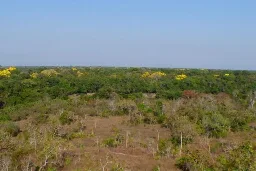
With its wine-hued head, cream-colored body, and its wings striped in black and chestnut brown, Kaempfer’s woodpecker makes quite an impression. Yet, despite its conspicuous looks, the bird has managed to evade detection for almost a century.
First described by ornithologist Emil Kaempfer in the mid-1920s in the Brazilian state of Piauí, east of Tocantins, it was initially thought to be a subspecies of the rufous-headed woodpecker (Celeus spectabilis). But differences in habitat, behavior and plumage led some ornithologists to conclude they were looking at a new species. They didn’t have the chance to confirm it, however: with no further sightings of the bird recorded, they thought that Kaempfer’s woodpecker had disappeared.
It wasn’t until the early 2000s that a fresh look at the differences between the two woodpecker species showed that Kaempfer’s woodpecker was indeed a distinct species endemic to Brazil. Then, in 2006, biologist Advaldo Prado captured a live individual in Tocantins, showing that scientists previously had just been looking in the wrong place.
Tulio Dornas, an ornithologist from the Federal University of Tocantins who has studied the species’ ecology and distribution, said an error in the early records may have contributed to the confusion. Kaempfer’s original specimen, he said, “was collected at the extreme edge of the Cerrado, during an expedition to the Caatinga, so ornithologists back then wrongly assumed it was a bird from that biome,” Dornas told Mongabay.
Yet even in the Cerrado, finding the bird can be a challenge, he added. The species thrives in the gallery forests that line the riverbanks of the Cerradão, a type of dry forest within the savanna ecosystem. They’re particularly fond of shaded areas with mature taboca bamboo plants (Gauda paniculata), which host the woodpecker’s main food source: ants. Reliant on only a few ant species that nest within the bamboo, the woodpeckers flit between thickets, drilling holes into the shoots to extract their prey.
As researchers narrowed down the bird’s habitat and intensified their search, sightings began to be reported from several Brazilian states, including Goiás, Matto Grosso, Maranhão and Piauí, indicating that while the woodpecker was rare, it wasn’t as endangered as previously thought. As a result, its conservation status on the IUCN Red List improved from critically endangered to vulnerable.
But with about 47% of the Cerrado’s original cover lost to agriculture, the habitat of Kaempfer’s woodpecker remains under pressure; today, it’s either severely fragmented or at imminent risk of agricultural conversion. As more details about the species came to light, concern about its future has also increased.
“We couldn’t find it in a single protected area, be it a national or state park, anywhere in Brazil,” Dornas said.
David Vergara-Tabares, a researcher at Argentina’s National Research and Scientific Training Council (CONICET) who has studied land-use impacts on woodpeckers globally, said the situation facing Kaempfer’s woodpecker isn’t uncommon in the region.
“Protected areas cover less than 10% of the regions where these birds are found in South America,” he told Mongabay. “Approximately a quarter of woodpecker species’ distribution ranges are affected by agriculture and urbanization. It’s a problem that has been worsening in recent years.”
https://news.mongabay.com/2023/08/to-safeguard-a-rare-brazilian-woodpecker-an-ngo-bought-out-its-habitat/
- Nature website question

What's a nature website that doesn't suck?
A test example is a site that has a photo of an iguana with numbers like the image macro I made myself.
Google was shit so went to a top result and I downloaded the fucked up Geocities-like page because it at least had what I wanted - an photo with numbers. To fix the page - I had to edit my local HTML copy. It was a real mess. At first I thought I deleted #13 by accident. Nope. #13 is in the photo but missing on the website page. And half of the numbers have no explanation.
Wikipedia was no good because they always want to explain things and force you to read. Example...
> The tympanum, the iguana's eardrum, is located above the subtympanic shield (or "ear shield") behind each eye.
What Wikipedia's editors should do is give you stuff an image with numbers or an infographic and then try to force you to read.
The original page if you want to see it for some reason - Basic Iguana Anatomy - wixsite.com.
Google really is awful now. If google was actually serious about AI - they would have used it already to fix their shitty results. The wixsite.com page is a top result because people want something simple to grok: like a photo with numbers.
- Vietnamese Mossy Frog

cross-posted from: https://mander.xyz/post/861819
> https://www.ecosia.org/images?q=Vietnamese%20Moss%20Frog > > New obsession.
- Venezuela has the worlds loudest bird

This is what happens under communism. Still think Stalin was cool, tankies?
The white bellbird is in fact the noisiest known bird in the world: its song reaches a volume comparable to that of a plane taking off, heard fifty meters away from the runway. Researchers have found that male white bellbirds sing loudest around females, likely in attempts to attract a partner. When a female perches nearby, the male begins its song, then pivots to face her head-on and belts his most ear-splitting note. Females may favor the loudest males.
Adapted to eat fruit, the bird’s very wide mouth opens broadly when it sings. Unusually strong core muscles may be the key to the bird’s unique vocal prowess.
- In Sumatra’s Jambi, community forest managers fish to protect peatlandsnews.mongabay.com In Sumatra’s Jambi, community forest managers fish to protect peatlands
MENDAHARA ULU, Indonesia — At the end of 2018, three communities in this subdistrict on the island of Sumatra were given rights to manage their local peatland by Indonesian President Joko Widodo, who showed up in person to present the certificate. Suryani still has the photo of the handover by Jokow...
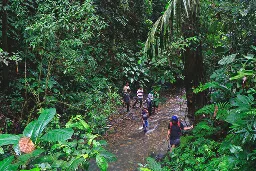
- Science shows the severe climate consequences of new fossil fuel extractiontheconversation.com Science shows the severe climate consequences of new fossil fuel extraction
More than a century of research shows that burning fossil fuels warms the climate – that’s exactly why granting new North Sea oil and gas licenses is a bad idea.

- Lightning in South Dakota

YouTube Video
Click to view this content.
Just as we arrived at the rez the gnarliest thunderstorm I have ever seen rolled in.
- Hey nerd, why the long face?

Its ecosystem is being destroyed so maybe that's why
Drymornis bridgesii
- Frog Appreciation Thread

Can we just talk about how great frogs are?
Frog facts:
Frogs have a thin, permeable skin which lets liquids and gasses pass straight through. This thin skin is also very sensitive to temperature, sucks up pollutants and toxins, and absorbs water – removing the need for frogs to drink. These unique qualities make frogs superstar bioindicators, which means that scientists can use data gathered from frogs to get a better understanding of an ecosystem’s environmental health. Because frogs live in water as well as on land, they can provide an indication of both habitats.
Frogs play an important role as both predators and prey in the food web. Frogs’ diets consist of large quantities of insects, including pests, helping to keep population sizes of these unwanted critters at bay. Frog eggs provide food for insects, like spiders and wasps, while tadpoles fill the bellies of fish, birds and some insects. With a wide range of birds, mammals and reptiles relying on adult frogs for food, their disappearance would drastically affect entire ecosystems.
Without frogs as predators, populations of mosquitoes, which are carriers of disease, will increase. Having frogs around can help to keep mosquito-transmitted diseases, like dengue and malaria, from spreading to humans.
Also look at them, they're cute as shit.
- Here are some harvestmen hanging out on a wall

There were probably hundreds of them on this building, not sure why they like it so much
spoiler
I choose to call them by their UK name because "daddy long legs" sounds weirdly sexual
- This worm was frozen in Siberian permafrost 46,000 years ago at a time when woolly mammoths, sabre-toothed tigers and giant elks still roamed the Earth. It has been revived.

> A worm has been revived after 46,000 years in the Siberian permafrost | CNN > > Scientists have revived a worm that was frozen 46,000 years ago — at a time when woolly mammoths, sabre-toothed tigers and giant elks still roamed the Earth. > > The roundworm, of a previously unknown species, survived 40 meters (131.2 feet) below the surface in the Siberian permafrost in a dormant state known as cryptobiosis, according to Teymuras Kurzchalia, professor emeritus at the Max Planck Institute of Molecular Cell Biology and Genetics in Dresden and one of the scientists involved in the research....
- In my work this year, I have removed the equivalent energy usage of ~400 US homes from the grid
I sell commercial solar arrays. I am proud as hell of making an actual, meaningful climate impact.
- Painite: One of the Rarest Gemstones in the Worldwww.geologyin.com Painite: One of the Rarest Gemstones in the World
Painite Painite is the rarest gemstone in the world. It is so rare that only about 300 painite crystals have ever been found. Painite is a c...
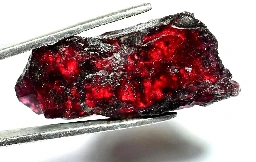
> Painite is one of the rarest gem mineral in the world. Only about 300 painite crystals have ever been found, and most of them are very small. The largest painite crystal ever found is only about 2.5 centimeters in length. Because of its rarity, painite is also one of the most expensive gem minerals in the world.
- Invasive Specie • Protean Magazineproteanmag.com Invasive Specie • Protean Magazine
John Favini interrogates the assumptions implicit in the notion of an "invasive species." The narrow concept muddles the real factors behind environmental crises and exonerates profit-seeking human activity.
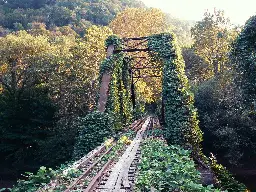
... > The invasive species is one concept among many inculcated by capitalist ideology, sublimating our intertwined social and ecological crises, transforming them into problems amenable to various kinds of security regimes. From border walls to fish dams, from militarized police departments to invasive species eradication campaigns, the capitalist state can only do so much to tamp down the mounting symptoms of an economic order at war with the planet’s ecology, and therefore its own survival. Consigned to leaving the roots untouched—that is, to ensure the reproduction of capitalism at all costs—the masters of humankind are vigorously pruning the branches that support their own weight.
...
- ‘What we need to protect and why’: 20-year Amazon research hints at fate of tropicsnews.mongabay.com ‘What we need to protect and why’: 20-year Amazon research hints at fate of tropics
Top tropical ecologists have spent two decades studying the impact of climate change on a single transect in the Peruvian Andes, an area unparalleled in its biodiversity. They find that every species studied there is struggling against warming temperatures.
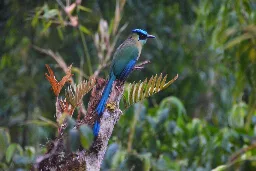
- "Antidepressants can put you at risk of potentially deadly heat stroke" How's it going, capitalism?www.insider.com Antidepressants can put you at risk of potentially deadly heat stroke. Here's how to stay safe while taking them this summer.
Different types of antidepressants have different effects on your body's thermoregulation, so people taking them have to be careful in the heat.

>"Tricyclic antidepressants can cause you to sweat less," Wheate said, "because they act as anticholinergics, which means they basically stop your sweat glands from producing sweat. We sweat to cool down, so if you're not sweating then you can't regulate your body temperature properly and you're likely to overheat."
>Selective serotonin reuptake inhibitors, on the other hand, make you sweat more.
...
>He suggested having a fan blow over you if you're taking tricyclic antidepressants, so that even though you're sweating less, the sweat you are producing is more effective at wicking away heat from your body.
>For those on SSRIs, Wheate said that drinking lots to replace lost fluids is the best thing you can do. But, he said, "you don't want to just drink water — you need to drink something salty or slightly sugary because when you sweat you don't just lose the water, you lose salts and sugars, and you need to replace those."
Ketamine makes you sweat honeydew like an aphid !bug-facts
- Whale shark saved from entanglement with rope
Video
Click to view this content.
very pleasing. very very pleasing.



